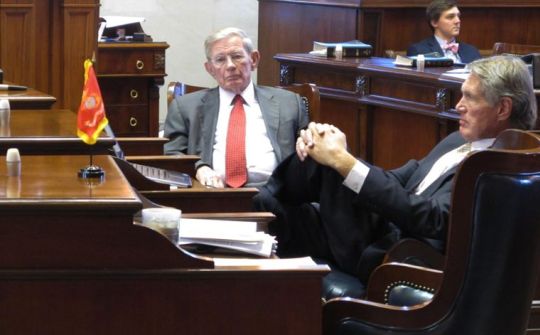By HANNAH HILL
No wonder everybody’s confused
Nov. 28, 2016, 3:36 p.m.: In 2012, when voters approved the constitutional amendment placing the governor and lieutenant governor on the same ticket, it stated that changes regarding the succession of lieutenant governor and governor would take effect in 2018. When the legislature actually amended the constitution, however, it omitted the dates – making the changes effective immediately. Lawmakers may have intended the change to take effect in 2018, but what found its way into the constitution – by negligence or design – is an effective date of 2014.
—Phillip Cease
What happens if Governor Nikki Haley leaves office before the end of her term? What if Lieutenant Governor Henry McMaster also does? Who would be governor then?
Those questions have been raised over the last several days along with speculation about posts in the Trump administration – and some insiders are getting them wrong.
Before 2014, South Carolina’s constitution required that in the absence of a lieutenant governor, the Senate president pro tempore would give up his seat and serve as lieutenant governor. If both Haley and McMaster resigned, Senator Hugh Leatherman as Senate president would have been required to give up his Senate seat to become governor. The Senate would then elect a new president, who would also give up his Senate seat, to become lieutenant governor.
That year, however, the constitution was amended. Now it stipulates that if the governor is unable to serve, the lieutenant governor takes her place and nominates his own lieutenant governor, with the advice and consent of the Senate.
To find out what happens if the line of succession needs to go further than the lieutenant governor, you have to look at the law, not the constitution, which states that if both the governor and lieutenant governor are unable to serve, the Senate president will “perform the duties and exercise the powers of governor” until the next election. If he cannot serve, the speaker of the House would. If neither of them can serve, the General Assembly elects a new governor.
In other words, today, with Haley and McMaster both gone, Leatherman would assume the powers and duties of the governor without having to give up his position as Senate president.
The Senate president already has considerable power, including a seat on the five-member State Fiscal Accountability Authority governing panel, which makes bonding and financial decisions for the state; the ability to appoint two of the 10 members of the Joint Transportation Review Committee, which screens and nominates DOT Commissioners; and the ability to appoint two of the ten members of the Judicial Merit Selection Commission, which nominates judges for election by the General Assembly.
There already are 64 board, commission, or committee positions connected to the Senate president, and the current president also chairs the Senate finance committee.
If both the governor and lieutenant governor should leave, he’d control all three branches of government.

